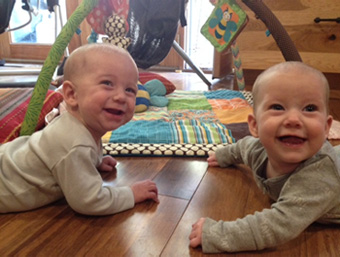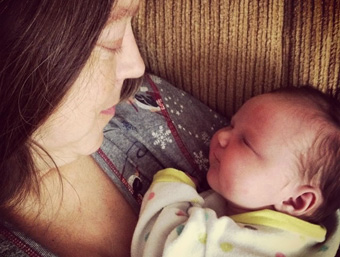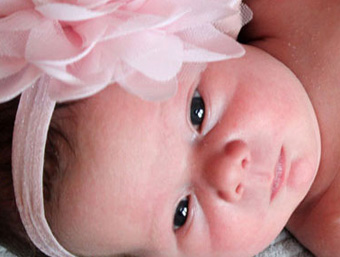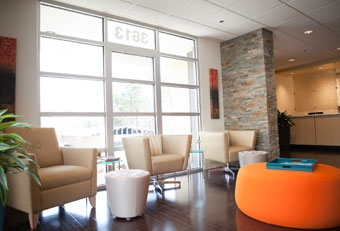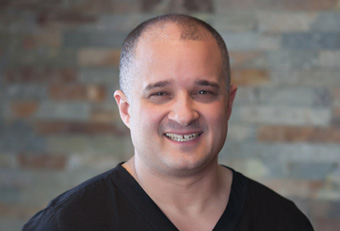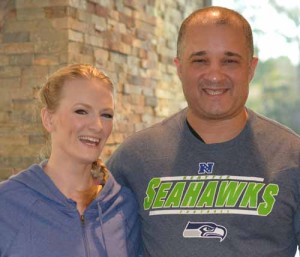Candice is from Washington state and she traveled 2873 miles to have her tubal reversal surgery at
A Personal Choice.
Candice had a unique tubal ligation ‘situation’…or so we thought.
As a result of her tubal ligation problem, she felt it was better to have reversal at a center that specializes in tubal reversal surgery rather than take her chances with a doctor who does reversal surgery infrequently.
Candice traveled with her mother. Both of them were wonderful people and Candice agreed to share her story for the benefits of others.
Tubal ligation: Reviewing Tubal ligation surgery reports
Candice is 29 years of age and is the mother of two children. She is a nurse and had a tubal ligation at the time of her second c-section. Candice, like all of us, cannot predict the future. She changed her mind after her tubes were tied and wanted to have more children. It was then she began to investigate tubal reversal surgery.
She sent us her tubal ligation records and we soon discovered a discrepancy between her tubal ligation operative report and her pathology report. According to the operative report the doctor dictated they performed a standard ligation and resection (tied and cut) type of tubal ligation. There was nothing unusual in her operative report.
Unfortunately the pathology report stated one of the tubal segments had fimbrial tissue…or the end of the tube. The path report suggested a fimbriectomy tubal ligation was performed!
Difficult tubal ligations: Our Experience
Fimbriectomy tubal ligations can be challenging to reverse. The pregnancy success rate after fimbriectomy reversal ranges from 15% to 40%. Thankfully fimbriectomy tubal ligations are not common.
What was unusual about Candice’s situation was the doctor did not dictate performing a fimbriectomy operation. What was unusual about the pathology report was only one tubal segment indicated fimbrial tissue…not both tubal segments.
In our experience, a doctor who performs fimbriectomy tubal ligations usually does both tubes that way…not just one. If the doctor only performs fimbriectomy on one tube then it is usually because of severe scar tissue. To complicate matters, we do see operative notes that are inaccurate.
Usually the pathology reports are the most reliable; however, we have seen incorrect pathology reports. If the doctor removes a section of the tube near the end of the tube, then this tube can turn ‘inside out’ and look like fimbrial tissue to someone who is not examining the tissue carefully.
In Candice’s situation it was difficult to tell exactly how her tubal ligation procedure was performed.
Tubal ligation reports reviewed: Now what?
We advised Candice she could come for tubal reversal and we should be able to repair at least one tube. We encouraged her to consider a screening laparoscopy.
Our practice is the only reversal center offering laparoscopy. Patients can choose to have a screening laparoscopy for an additional $1,500. If their tubes are not repairable then the patient has a much shorter surgery and receives a full refund of the tubal ligation portion of the surgery fee. We feel a screening laparoscopy can be a very helpful ‘tubal reversal insurance policy‘ for many patients who may have these unique tubal ligation ‘situations‘.
More information: Advantages of screening laparoscopy during tubal reversal
Screening laparoscopy allows us to look at the tubes using a camera inserted through the belly button. If the tubes can’t be repaired the surgery is much shorter and we can close the incision using a single suture and a band aide. If the tubes cannot be repaired the patient gets a major refund. As a tubal reversal specialist, I like laparoscopy because it allows me to have a very careful discussion with the patient before surgery about what situations they want me to proceed or not proceed with a tubal repair.
In Candice’s case, she was very clear with me about what she wanted to be repaired. This allowed me to be confident I was doing what she wanted to be done. It also allowed me and the patient to make a calculated decision about the probability of tubal reversal success. If a patient has a bad tubal ligation then getting $6,400 refunded to them will go a long way towards helping pay for the second best treatment after tubal ligation – in vitro fertilization (IVF).
How did things go?
During the screening laparoscopy we saw that her tubes were cut and tied in the middle. She did not have a fimbriectomy tubal ligation. Her pathology report was inaccurate. We were able to successfully repair her tubes and her tubes were in excellent shape and very long.
Seattle Seahawks First…Tubal Reversal Surgery Second
Candice is from the Seattle area. She was very kind and brought a very nice gift to the preoperative consultation. She gave me an amazing Seattle Seahawks shirt! She was worried I may not have been a Seahawks fan because it would have been rather awkward if I was a die-hard 49ers fan!
Little did she know I love the Seahawks!
My three favorite teams are Carolina Panthers, Dallas Cowboys, and Seattle Seahawks. The Seahawk’s quarterback, Russell Wilson, played for North Carolina State and I think he is an amazing human being because of the things he says, the sportsman/gentleman he is, and his North Carolina roots!
Submitted by DrMonteith@tubal-reversal.net

